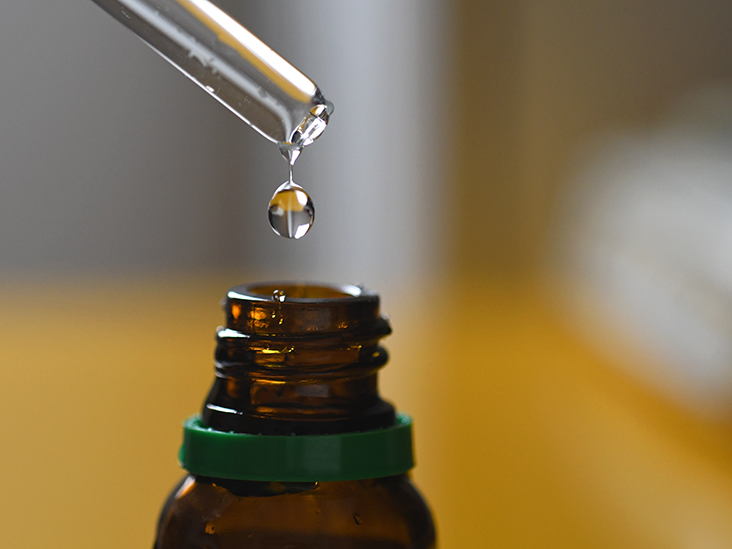Acidified Sodium Chlorite Solution could reduce the impact of multiple exposures to COVID-19 in frontline health-care providers

Limited availability of personal protective equipment is endangering first-line health-care providers treating patients with presumed or confirmed COVID-19 infections. This article has multiple objectives in regard to this reality: First, to raise awareness of the need for safe and effective prophylaxis to protect health-care providers with insufficient personal protective equipment from repeated exposures to COVID-19.
Second, to summarize the scientific evidence in support of solutions of acidified sodium chlorite (ASC) and its daughter compounds, chlorous acid and chlorine dioxide, as potential targets for said prophylactic use. Third, to propose a regimented protocol using commercially available solutions of ASC having sufficient concentrations of chlorine dioxide for virucidal activity to support safe and effective prophylactic use. And fourth, to raise awareness of and compare other potential prophylactic options currently under investigation.

Among essential workers selflessly serving during the coronavirus disease 2019 (COVID-19) pandemic are health-care providers (HCPs). That frontline HCPs are caring for contagious patients with inadequate personal protective equipment (PPE) is well known. Many HCPs have resorted to handmade masks to address this need. Unfortunately, the effectiveness of such masks as PPE is uncertain.
COVID-19, like other coronaviruses, is an enveloped, positive-sense RNA virus. It is thought to be highly contagious with human-to-human transmission occurring through respiratory droplets expelled during coughing or sneezing from an infected individual that are then breathed in by the next host. In the early stages of infection, patients experience symptoms of the upper respiratory tract. For those who experience a mild infection, the illness does not progress. For others, illness can progress to a more serious lower respiratory infection, potentially turning fatal.
Although not conclusive, some evidence suggests that higher viral load may be associated with more severe clinical outcomes for patients infected with COVID-19. Similar findings suggesting that high viral load in the nasal passages may be an indicator of severe illness were obtained from analyses of patients infected with SARS-CoV, a distinct coronavirus, during the 2003 global outbreak.
Taken together, the lack of adequate and readily available PPE for first-line HCPs, the manner in which COVID-19 is transmitted, and the potential impact of viral load on patient outcome all indicate a need for prophylaxis targeting the upper respiratory tract to mitigate the impact of multiple exposures to the virus.
A safe prophylaxis consisting of a mouth rinse that can be administered to effectively cleanse the back of the throat in combination with a solution administered nasally to cleanse the nasal and nasopharyngeal passages may successfully target the tissues of the upper respiratory tract likely associated with initial infection.
Due to their microbicidal properties and their tolerability as cleansers of these same tissues, solutions of acidified sodium chlorite may be appropriate for such prophylactic use.
Acidified sodium chlorite is used as an antiseptic in the industrial setting for food processing and water purification. It has been evaluated or used more recently in over-the-counter oral or nasal cleansing solutions.

Acidified sodium chlorite (ASC) solution, or sodium chlorite (NaClO2) in aqueous solution with acid (H+), forms semi-stable chlorous acid (HClO2). Chlorous acid degrades to chlorine dioxide (ClO2), which, over time, further degrades to chlorite (ClO2¯) and ultimately, chloride. Exposure to light and higher temperatures accelerates the degradation process. Chlorous acid and ClO2 are thought to be responsible for the microbicidal action of ASC.
Microbicidal properties of HClO2 and ClO2
HClO2 has demonstrated potent virucidal activity in vitro with <4 ųg/ml of HClO2 effectively inactivating enveloped viruses at a pH consistent with the range observed in human nasal mucosa. HClO2 also seems to have limited cytocidal effects at greater than effective virucidal concentrations, suggesting its potential as a strong and safe disinfectant when present at low concentrations.
ClO2 has also demonstrated virucidal properties in vitro, including against coronaviruses, with a 0.004% (wt/vol %) solution of ClO2 effectively inactivating 100% of SARS-CoV in wastewater after exposure for 5 minutes, and inactivating 94.4% of the virus after exposure of 1 minute.
Additionally, ClO2 gas derived from ASC has been shown to have potent virucidal properties in vivo, specifically against influenza A viral infection in mice. Mouth rinse studies of ClO2 solutions derived from ASC have demonstrated antibacterial and antifungal properties when used in people. These solutions have ranged from 0.003% to 0.016% (wt/vol %) ClO2. A study of 0.14% ASC solution (ClO2 percentage not specified) demonstrated effective antibacterial action on saliva for up to 5 hours after single administration when patients rinsed with solution for 1 minute before expectorating.
Adverse events in the above studies were minor, if any, with taste disturbance being the most frequent.
Published findings on the use of ASC/ClO2intranasal solutions in humans are not available at this time. However, tolerability data-on-file (2017) shared by Sinox Pharma, Inc. show that a 0.008% (wt/vol %) ClO2 solution derived from ASC is nonirritating when administered as an intranasal cleanser to individuals with sub-clinical or clinical sinusitis.
Safety and tolerability
It is important to note that consuming solutions of ASC or ClO2, particularly those containing high concentrations of either compound, is inadvisable and may cause serious harm.
In 2000, the World Health Organization (WHO) published the International Programme on Chemical Safety (IPCS) derived recommendation of a tolerable daily intake of 0.03 mg of chlorite by kg weight, per day. Based on the IPCS recommendation, the WHO set a quality guideline value of 0.7 mg/L for chlorite in drinking-water.
In a study of adult male and female African Green monkeys, a daily dose of 9 mg/kg of ClO2 ingested through drinking water seemed to strongly inhibit thyroid synthesis.
However, more recent evaluations in animals and humans demonstrate that exposure to low concentrations of ASC or ClO2 (≤0.2% and <0.02%, respectively) such as those found to be effective in human mouth rinse studies are well tolerated. Further evaluation of both safety and effectiveness when such solutions are employed for prophylactic use in humans to mitigate the effects of multiple exposures of COVID-19 is strongly advised.
The lack of sufficient PPE to protect first-line HCPs from infection has elevated the need to identify a safe and effective prophylaxis to mitigate the impact of multiple exposures to this virus. Only one of several potential solutions to this problem has been presented here.
Other proposed options for prophylaxis include a protocol detailing the use of a highly diluted form of povidone-iodine (PVP-I) solution as a mouth rinse and nasal spray, and the administration of nitric oxide gas to HCPs at the start and end of their shifts.

